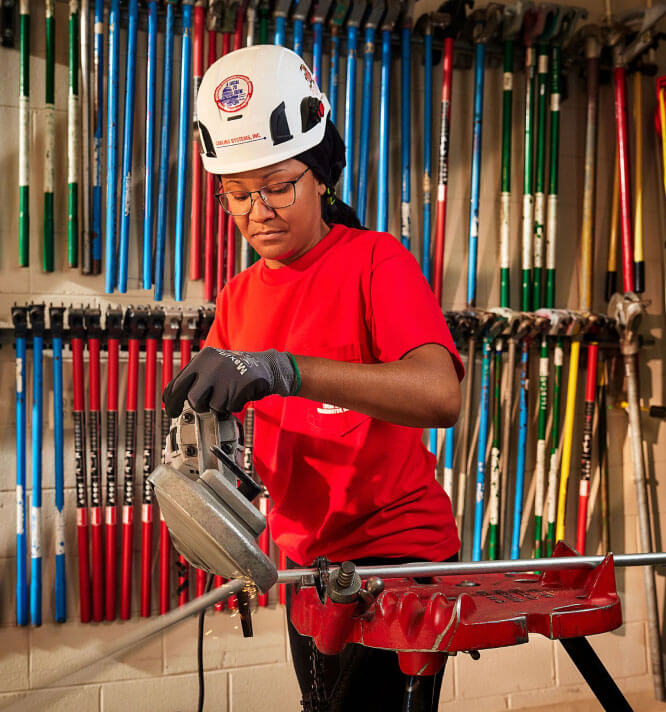
By Mark Bryan, Director, National Capital Region, United States Green Building Council
Although “going green” has never been easier for building owners, identifying a starting point and navigating the plethora of technologies and services to achieve sustainability goals can prove daunting. USGBC has led the global movement toward building green for over two decades, and we believe that performance management enabled by advances in both hardware and software is the next evolutionary step in moving towards greater energy and cost efficiency in green buildings.
Metering and sensor technology continues to evolve and has become an integral part in understanding how your building or interior fit-out is functioning at any given moment. A corresponding explosion of benchmarking, monitoring and automation software systems has provided owners and managers with a bewildering array of options capable of meeting the needs of any building.
On the hardware side, smart meters and real-time sensor technologies now enable owners and managers to understand what’s going on in their buildings on an increasingly granular level. These sensors provide deeper levels of insight into how much energy and water is being used, how much waste is being produced and how indoor environmental quality is affecting occupants in different spaces. Combined with efficient lighting, HVAC systems, low-flow water fixtures, “internet of things” enabled devices and device-level energy management technologies, monitoring technology delivers long term savings that easily outweigh the marginal additional costs of “going green.”
It’s worth noting that proper installation and fine tuning of these systems is critical to overall success and requires the services of skilled electricians and technicians, particularly when integrating other technologies like renewable energy generation and battery storage systems.
On the software side, the next generation of energy management information systems (EMIS) is making it easier to measure and manage the performance of entire portfolios of buildings, while also providing unprecedented amounts of data on a single building or tenant space. Broadly speaking, EMIS are software tools and services that provide an array of data points that helps owners and managers monitor energy and resource use, provide suggestions on improving operations, or autonomously control the functioning of systems and equipment.
Different products provide different scopes (whole-building, tenant space, or equipment specific) and quantities (monthly, hourly, or real time frequency) of data. They also offer different varieties of functionality, including benchmarking and utility measurement, fault detection and diagnostics, data analytics, real-time commissioning and automated system optimization. With so many options, building owners can find the right system to meet their individual needs and goals by taking the time to evaluate options and engage reliable providers.
The combination of the right hardware and software can lead to the best outcomes in performance management, and therefore cost savings and shorter pay-back periods. Effectively deploying these technologies can prove easier said than done, however, and typically requires close collaboration of multiple parties with careful attention paid to integrated design. While designing and implementing these systems in new construction projects can prove cost-effective with the right teams in place, retrofitting existing buildings with the latest technologies becomes a more complex and difficult task, especially for older B and C class buildings.
Given the predominance of these building types in the overall building stock, there’s clearly more work to be done in providing complete solutions. USGBC works with partners and allies like the Electrical Alliance to bring together builders, architects, engineers, hardware manufacturers, software developers, financiers and incentive-providing government agencies to develop flexible sets of solutions that are financially attractive to owners of a wide range of buildings beyond the Class A commercial office markets.
At USGBC, the Arc platform is our newest complement to LEED and other green building rating systems, standards, protocols and guidelines, which allows buildings and spaces to compare performance metrics and connect those metrics to green building strategies. Arc is a benchmarking tool developed to provide building owners a user-friendly system to track performance across a range of categories, while simultaneously facilitating LEED certification and recertification for existing buildings. Arc allows building owners to generate a Performance Score by inputting data across five categories – Energy, Water, Waste, Transportation, and Human Experience.
Although Arc is a tool every building owner can use, for projects achieving a Performance Score of at least 40, Arc provides an alternative pathway to meet the requirements of two prerequisites and sixteen credits in the LEED v4 Operations and Maintenance rating system. Arc also provides an entry point for all buildings with the goal of certifying them to LEED or to other GBCI rating systems such as GRESB, WELL, PEER, SITES, Parksmart and any newly added systems. In addition, performance based certification is also being extended to communities, cities, districts and neighborhoods.
We’re excited about the future of building performance and invite you to join us on this journey toward responsible and profitable sustainability. You can learn more about our work at www.usgbc.org, http://www.usgbc.org/usgbc-national-capital-region and www.ArcSkoru.com.




